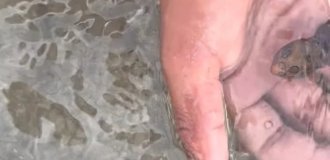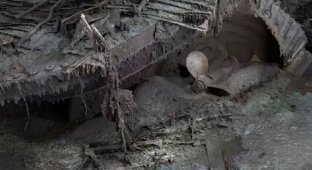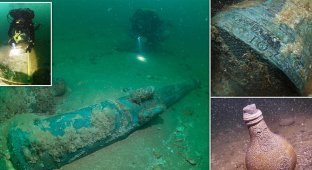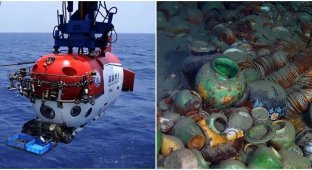Robot discovers 2,000-year-old treasure in the Mediterranean (2 photos + 1 video)
In the Mediterranean Sea on the site of a sunken Roman ship researchers from France and Italy discovered glassware and raw glass blocks. The treasure was hidden at a depth of 350 meters between Corsica and Capraia. Judging by the find, the last voyage of the ship committed at the end of the 1st - beginning of the 2nd century AD. 
Glass cargo is the second known to date day by chance in the Mediterranean. The sunken ship left on the seabed thousands of glass shards and tons of raw blocks.
The mission was coordinated from the Italian side by Barbara Davidde of the National Underwater Cultural Heritage Administration, and with French side - Franca Sibecchini from the Department of Underwater archaeological research. Through direct involvement ecologist Nadine Le Bris from the Sorbonne University studied the fauna of this special deep ecosystem. 
The wreck was discovered in 2012 at a depth of 350 meters. The ship was initially thought to be in French territorial waters. In 2016, as a result of diplomatic negotiations on where the border should go, the place of opening passed Italy. The countries agreed to cooperate. Ministry of Culture France was provided with a research vessel "Alfred Merlin", equipped with robot "Arthur" and videographer "Ilarion". "Arthur" can dive to a depth of 2500 meters and lift loads, and "Ilarion" - shoot video at a depth of up to 500 meters.
"Arthur" brought to the surface a lot of glassware, including bottles, plates, cups, goblets, a small ungentary (vessel) and several unfinished blocks. Also found were two large bronze basins and several amphoras.
The study of the materials will allow you to find out the route of the vessel, as well as clarify the chronology of the shipwreck. Considering the type of amphoras (oriental amphoras, including those of the Beirut type, and several Gallic amphorae) and the number of glass vessels and blocks, archaeologists believe that the vessel was sent from one of the ports in the Middle East, possibly from Lebanon or Syria, to the coast of French Provence.
























